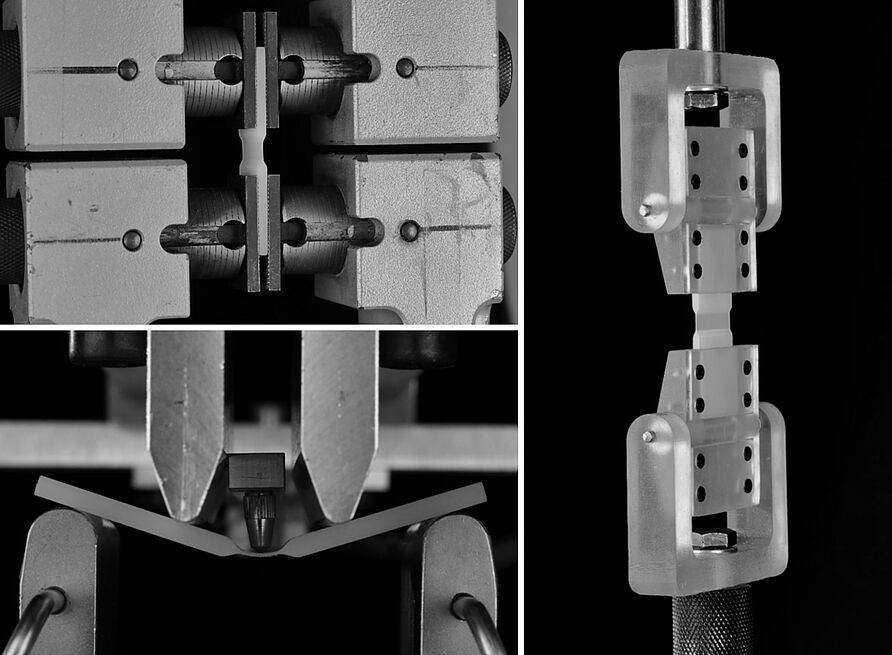Background The design of compliant mechanisms requires detailed knowledge about the stiffness properties of their flexible segments. However, there are no standardized test methods for flexure hinges, and therefore the influence of manufacturing-specific effects, such as anisotropy, on the stiffness properties cannot be quantified.
Objective This paper presents novel test methods for variable cross-section flexure hinges subjected to large deformations and pure bending loading, which determine the bending stiffness of flexure hinges over their entire deflection range using a universal testing machine.
Methods The novel test methods for flexure hinges are based on the tensile test, the four-point bending test (FPBT), and the column bending test (CBT). These test methods were initially formulated for constant cross-section specimens, but are adapted in this study to examine variable cross-section specimens. The derived test methods are validated by using isotropic materials with well-known properties and by comparing the calculated deflections with deflections measured by means of image processing.
Results The deflection validation shows that the adapted CBT (aCBT) is accurate over the entire deflection range, achieving curvature of up to κ=0.40 mm-1, whereas the maximum curvature in the adapted FPBT (aFPBT) is limited by the test methodology to about κ=0.15 mm-1. At small strains, the flexural modulus determined in the aCBT and aFPBT agrees well with the Young’s modulus determined in the tensile test, as would be expected for isotropic materials.
Conclusion The aCBT proves to be a suitable test method for flexure hinges at large deflections, whereas the stiffness characterization at small deflections can be performed with both the aCBT and the aFPBT. The presented test methods validated on isotropic materials form the basis for characterizing anisotropic flexure hinges with geometry-dependent stiffness properties.
P. Meyer, J. Finder, C. Hühne
Test Methods for the Mechanical Characterization of Flexure Hinges
Experimental Mechanics, 63, 1203–1222, (2023) [Link]

